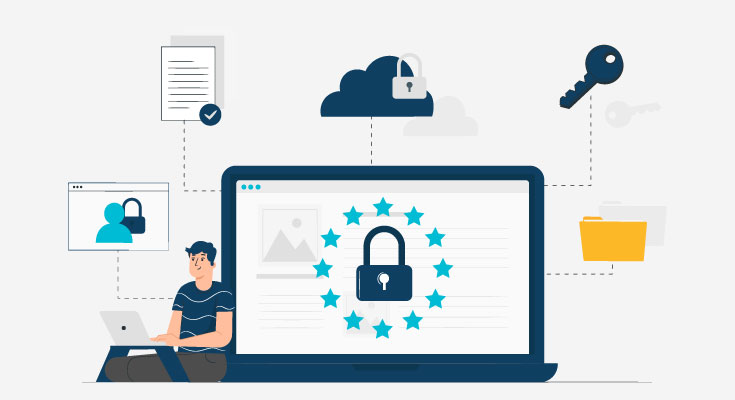Detecting and Preventing Fraud During Vendor Onboarding

As businesses globally are understanding the importance of employing additional fraud prevention methods, it has led to a dramatic fall in fraud rates. Handling the aftermath of fraud is becoming super expensive for businesses. This is why the adoption rate of new technologies and compliance rate is improving.
Unfortunately, even after several significant changes in the industry, vendor fraud is a major issue. Fraudsters who aren’t able to break into financial institutions and banks move on to vendor fraud. The reason why vendor fraud is one of the most growing categories is that businesses are highly vulnerable to attacks.
For businesses to identify and prevent vendor fraud, proper knowledge is needed. The more knowledge a business has, the better it can protect itself.
What is Vendor Fraud?
Vendor fraud is basically fraudsters manipulating a business’s payment system. This is done to steal goods and money. In almost all cases, vendor fraud is done with the intent of stealing money.
Any business can be a victim of vendor fraud, but it differs from business to business. Vendor fraud can happen through collisions with third parties. It can also happen because of untrained employees within the organization.
The most common examples of Vendor fraud include:
- A hacker manipulates a business’s payment systems to generate fraudulent vendor payouts.
- A vendor that fails to falsify receipts or documents slowly steals money from a business through its ongoing transactions.
- A group of employees wants to steal money from the organization.
- An employee steals company checks and deposits them into a personal account.
Which Businesses are at a Risk of Vendor Fraud?
Businesses that don’t have the right level of security and scrutiny are at the most risk of vendor fraud. Businesses that are small and mid-sized often fall prey to vendor onboarding fraud.
It makes a lot of sense for fraudsters to target small-scale businesses. More than often, small businesses rely on small teams to handle a variety of tasks. This can easily lead to mistakes. A lack of robust checks and no adoption of technology can lead to vendor fraud.
As businesses scale up and comply according to laws and regulation, it helps in preventing fraud. Companies that follow all the compliance guidelines tend to be less open to fraudulent activities due to mistakes. To combat the sophisticated methods used by businesses, fraudsters are also developing new methods.
Types of Vendor Fraud
Vendor fraud is different for every organization. There are multiple categories, that include:
- Billing Fraud: Billing fraud refers to payment-related fraud, it can be done in 2 ways by employees. Sometimes, fraudsters make up a fake vendor, or sometimes the employees make up duplicate payments by using actual vendor details.
- Fictitious Vendor: An employee with adequate information about a vendor can make up a fake vendor. Or, they can register as a new vendor and get regular payments on this account.
- Duplicate Payments: An employee can use actual vendor information to make fake information and generate fake payouts. The same payments and extra payments can be transferred to employees’ accounts.
- Check Fraud: This vendor fraud involves an employee engaging in forging or modifying information available on the check of a vendor. They do this to get payments into their own accounts.
- Accepting Bribes: There’s another type of vendor fraud that’s quite common. A vendor pays some kind of commission to employees for helping them get additional sales or benefits.
- Excess Bills: Whenever vendors issue an invoice for bill payment, and if it’s more than the desired amount, it’s called over-billing. This is also considered a type of vendor fraud.
- Price Fixing: This fraud happens when 2 or more vendors make a deal together and fix the price of a product at a higher value. The buyer has no option other than to pay higher prices to the vendors.
- Cyber Fraud: This is the most complex type of fraud to detect. Hackers can act as a vendor even when they don’t have any relation to the company. They operate completely from the shadows and they are able to create a fake vendor profile. They try to trick businesses into making payouts for goods and services. Needless to say, all the records and bills are fake and fabricated. This is what makes it one of the most challenging types of fraud to detect.
Detecting and Preventing Vendor Fraud
There are some basic rules and regulations every business needs to put in place to prevent vendor fraud.
1. Vendor Controls
Businesses need to set up a checklist outlining all the guidelines for vendor onboarding. Here are some common things you can keep in mind:
- Businesses need to follow all the due diligence procedures. There should be extra attention to verifying information provided by the vendors. Online document and online vendor bank account verification technologies can help in streamlining this process.
- There should be a centralized vendor database with your preferences. There should also be a list of high-risk vendors.
- Businesses need to conduct thorough checks of all the vendors. Using technologies to do so can save both time and cost.
- Checking bills issued by vendors is a good practice to make sure you’re paying for things that you don’t have to.
2. Employee Measures
A lot of times employees help vendors orchestrate the fraud. To prevent this, businesses should have some guidelines for their employees:
- Doing thorough background checks during employee onboarding can uncover hidden red flags.
- Keeping financial information limited only to high-level employees.
- Larger businesses should separate the duties of employees for better accountability and control.
- A person that’s in charge of handling vendor information should be different than those who approve these vendors into the organization.
- Smaller businesses should rotate the duties of employees in vendor/AP/purchase departments. Or to make processes easier, businesses can hire managers for different tasks.
3. Set up Due Diligence Processes
Before you onboard vendors, you need to have a proper due diligence checklist. Having a proper guideline can help newer employees onboard vendors that are legit. As a business, you need to conduct thorough vendor verification. You need to make sure that the mailing addresses are correct. Check if the bank account is legit. Verify if the information and document submitted by them are original and not tampered with.
Conclusion: Vendor Fraud Prevention Guidelines
Vendor fraud can impact your business in a lot of ways. Prevention of vendor fraud requires proper planning and sticking to the plan. Preventive measures should be a priority for most businesses, and they should also focus on technologies that can help make the process easier.












